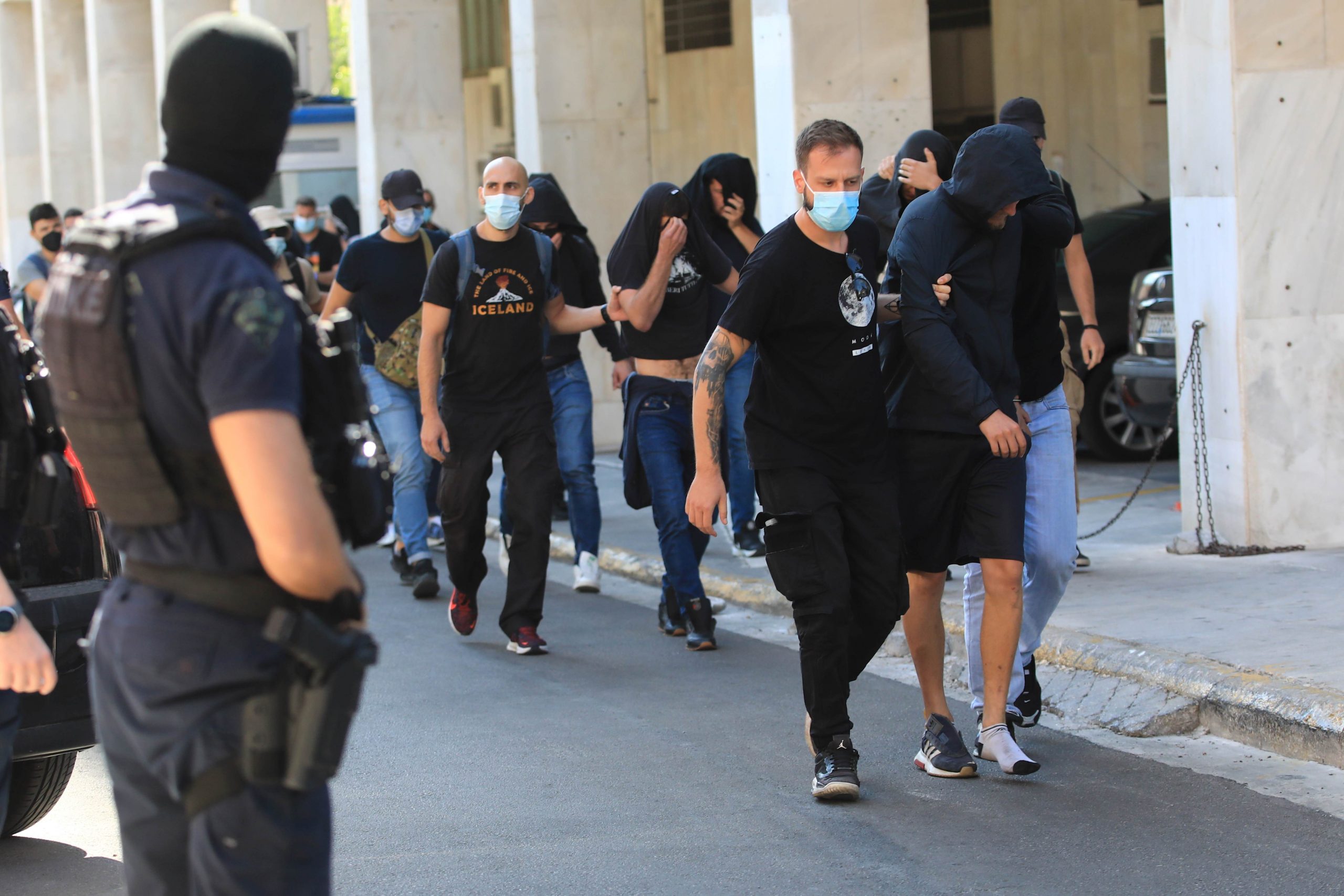One-hundred and five suspects, mostly Croatian nationals, held in remand for the hooligan violence and a related stabbing death outside the AEK Athens stadium early last August were summoned for supplementary testimonies this week.
The first batch of 45 jailed suspects appeared before an investigating prosecutor in Athens on Monday.
Many of the suspects have been recently charged with an extra count of public conflict leading to a fatality, while video footage has been used to identify specific individuals shown engaging in the destruction of a third party’s property.
According to reports, most of the remanded suspects, identified as “ultras” of the Dinamo Zagreb football club, have filed a motion for bail, with a decision expected in the coming period.
The shock and fallout from the deadly Aug. 7 hooligan rampage outside the football venue shocked the country at the time, with local law enforcement finally springing into action to arrest the 105 suspects after first allowing a convoy of vehicles carrying the Dinamo Zagreb “ultras” a “free pass” to cross half of Greece and end up directly outside AEK Athens’ home field.
One local man, 29-year-old Michalis Katsouris, was stabbed to death and several other people injured when roughly 120 to 150 masked Croatians and some two dozen local hooligans – rivals of AEK – wielded clubs, bats and threw firebombs and other objects outside the Nea Philadelphia district stadium in northwest Athens.
At least three investigating magistrates have been assigned the main investigation into the fatality and rioting.
No one has so far been identified as the assailant or assailants in the homicide.
According to reports, Greek police were provided with written warnings by Croatian and Montenegro authorities, with the latter detailing the exact vehicles transporting the hooligans.
Greek customs officers at the Kakavia border crossing with Albania also reported the convoy’s arrival, searching several vehicles and recording that the passengers were all young Croatian males, as well as other features, such as haircuts and types of similar clothing worn. In fact, media reports have some of the Croatian nationals admitting that they were headed to Athens on account of the AEK-Dinamo Zagreb match, even though away team fans were banned from attending.
The convoy of vehicles subsequently passed numerous toll posts, all under the “discreet” police surveillance. After losing contact with the vehicles carrying the Croatian hooligans as they reached the Greek capital’s outer perimeter, police were then alerted by staff members at a northwest Athens urban rail station of their presence and direction of travel. Finally, a small contingent of police officers made contact with the group as they walked towards the stadium, but failed to intervene before the violence erupted.



